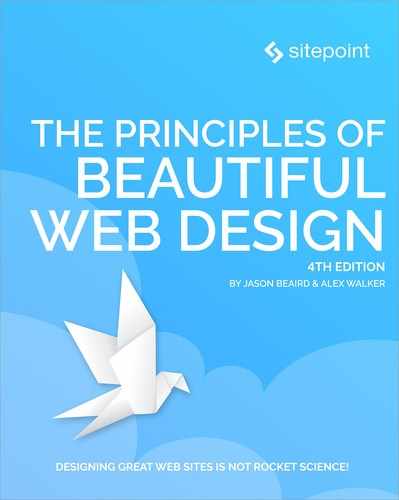0%
7Chapters
0-1Hours read
0kTotal Words
Book Description
The Principles of Beautiful Web Design is the ideal book for anyone who wants to design stunning websites that provide a great user experience. Perhaps you're a developer who wants to understand how to make your applications more visually appealing, or you're a novice who wants to start on the path to becoming a designer.
This book will teach you how to:
- Understand what makes "good design," from discovery through to implementation
- Use color effectively, develop color schemes, and create a palette
- Create pleasing layouts using grids, the rule of thirds, and symmetry
- Employ textures: lines, points, shapes, volumes, and depth
- Apply typography to make ordinary designs look great
- Choose, edit, and position effective imagery
This easy-to-follow guide is illustrated with beautiful, full-color examples, and will lead you through the process of creating great designs from start to finish.
The fourth edition of this bestselling book has been greatly revised and now features:
- Updated and expanded coverage responsive web design techniques
- A new sample project
- New sections on pattern libraries and how design fits on modern app development workflows
- Common user-interface patterns and resources
Table of Contents
- The Principles of Beautiful Web Design, 4th Edition
- Notice of Rights
- Notice of Liability
- Trademark Notice
- About SitePoint
- About the Authors
- Preface
- Chapter 1: Layout and Composition
- The Design Process
- Defining Good Design
- Web Page Anatomy
- Grid Theory
- CSS Frameworks
- Balance
- Unity
- Emphasis
- Bread-and-butter Layouts
- Web Trends
- Finding Inspiration
- Using a Morgue File
- Responsive Design
- Screen Resolutions
- Responsive Web Design Principles
- Responsive Frameworks
- The Project: Trashmonger
- Sitemap
- Chapter 2: Color
- Chapter 3: Texture
- Chapter 4: Typography
- Chapter 5: Imagery
